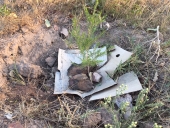posted 1 year ago
After moving from IL where I had 6-8 in of topsoil to NW Tennessee, where I have 1 in of topsoil, I made the same decision for planting a garden for the foreseeable future. I have laid out 5 rows of 5 bales for my tomatoes, peppers, squash, cukes, etc but my new fruit trees, grapevines, blackberry canes, strawberries, and asparagus are going to have to adapt to the somewhat amended soil I can give them until the gypsum and other amendments I am adding over time to their locations. Having grown up with somewhat clay soils in SW Ontario Canada, I am familiar with amending soils for gardening. The quickest way for me, as with you, is to use straw bales to grow in and amend on the go so I don't have to wait 3-5 years for my amendments to transform the existing soil into usable growing medium while growing in pots or having to construct raised beds to get around the process entirely. Eventually I hope to have quality soil in the garden area, but will continue to use bales as I like the ability to harvest without stooping and bending while also adding nutrients to the existing soil each year as the bales decompose. I will add mulched leaves this fall to the entire area as well as around all of my newly planted fruit trees, canes, and vines to help them along as well.
On the plus side, I don't see myself having to water my garden this year, maybe ever, as we get frequent soaking rains, and the clay underneath my bales holds the moisture very well, and I now have a two month longer growing season !!










